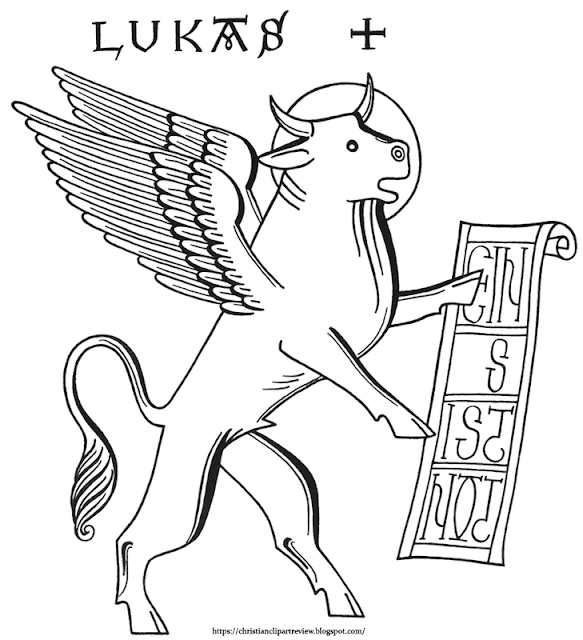"St. Mark's is the Gospel for the Romans, the Gospel of incident, the anecdotal Gospel, the Gospel which represents Christ as the Son of God and Lord of the world."
His emblem is the lion: expressing courage, dignity, and energy.
Scriptural Resources for The Gospel of St. Mark's Symbol - A Lion:
- "The beginning of the gospel of Jesus Christ, the Son of God." Mark 1:1 (ESV)
- "and saying, “The time is fulfilled, and the kingdom of God is at hand; repent and believe in the gospel." Mark 1:15 (ESV)
- "In those days Jesus came from Nazareth of Galilee and was baptized by John in the Jordan. And when he came up out of the water, immediately he saw the heavens being torn open and the Spirit descending on him like a dove. And a voice came from heaven, “You are my beloved Son; with you I am well pleased." Mark 1:9-11 (ESV)
- "Passing alongside the Sea of Galilee, he saw Simon and Andrew the brother of Simon casting a net into the sea, for they were fishermen. And Jesus said to them, “Follow me, and I will make you become fishers of men.” And immediately they left their nets and followed him. And going on a little farther, he saw James the son of Zebedee and John his brother, who were in their boat mending the nets. And immediately he called them, and they left their father Zebedee in the boat with the hired servants and followed him." Mark 1:16-20 (ESV)
- "And no one pours new wine into old wineskins. Otherwise, the wine will
burst the skins, and both the wine and the wineskins will be ruined. No,
they pour new wine into new wineskins." One Sabbath Jesus was going through the grainfields, and as his disciples walked along, they began to pick some heads of grain. The Pharisees said to him, "Look, why are they doing what is unlawful on the Sabbath?" He answered, "Have you never read what David did when he and his companions were hungry and in need? In the days of Abiathar the high priest, he entered the house of God and
ate the consecrated bread, which is lawful only for priests to eat. And
he also gave some to his companions." Then he said to them, "The Sabbath was made for man, not man for the Sabbath. So the Son of Man is Lord even of the Sabbath." Mark 2:22-28 (NIV)
- "At that time people will see the Son of Man coming in clouds with great power and glory. And he will send his angels and gather his elect from the four winds, from the ends of the earth to the ends of the heavens." Mark 13:26-27 (NIV)
 |
| The Symbol for The Gospel of Mark is a Lion. |
 | ||
| St. Mark's Gospel by Rudolf Koch. To see more lion symbols by Rudolf Koch click here. |



























